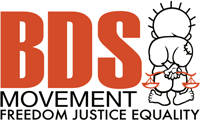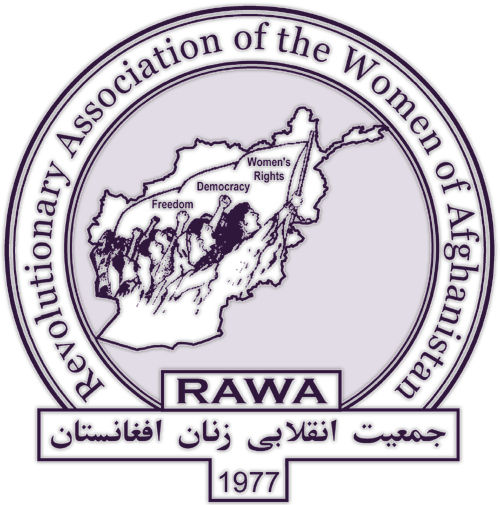WW4 Report
Libya: US air-strike targets jihadist leaders
US warplanes on June 14 carried out air-strikes on a farm outside Ajdabiya, Libya, killing several leading members of the Ansar al-Sharia militant network. Among those reported killed is Algerian jihadist Mokhtar Belmokhtar AKA "Khaled Abou El Abbas" or "Laaouar," former leader of al-Qaeda in the Islamic Maghreb (AQIM). Details of the attack were reported by authorities of Libya's "official" government in Tobruk, who said they had been consulted before the raid. Washington only confirmed a raid against a "mid-level al-Qaeda operative in Libya," without giving any names or exact location. After the air-strikes, there was apparently an attempt to bring the wounded into town for treatment at the hospital, but it was met with stiff resistance both from local reaidents and troops from the Libya army's 151 Battalion. The targeted farm reportedly served as a base for a mixed force of jihadists from Ansar al-Sharia, ISIS and the Ajdabiya Shura Council. (Libya Herald, AFP, June 14)
Mexico: new 'massacre' in Michoacán
Mexican authorities boasted another take-down of a top narco lord May 29, with the arrest in Jalisco state of Manuel García Orozco, a leader of the New Generation cartel. García Orozco was detained "without a shot fired" at a road checkpoint in Tlajomulco de Zuniga municipality. He is accused of overseeing operations in Jalisco's Cienega region along the border with Michoacán state, including drug smuggling, fuel theft and extortion. He is also accused of involvement in "various attacks" against security forces, including the abduction and murder of two federal police officers in Michoacán in November 2013. The investigation into their disappearance led to the discovery of 37 clandestine graves containing 75 bodies in the Jalisco municipality of La Barca, near the state line. (AFP, May 29)
ISIS in Libya: now a three-sided war
For months, Libya has been divided between the Islamist-led Libyan Dawn coalition that controls Tripoli and the west, and the more secular "official" government now exiled to Tobruk in the east. But with ISIS seizing territory, it is now turning into a three-sided war. Heavy fighting is reported as the "official" Libyan National Army's Brigade 309 has launched an offensive to take the port of Mreisa from ISIS fighters. (Libya Herald, June 13) Meanwhile, the Majlis al-Shura militia, aligned with the Libyan Dawn movement, is fighting ISIS for control of Derna. One June 13, a presumed ISIS suicide bomber killed three when he blew himself up on a Derna street. (Reuters, June 13) The day before, seven Derna residents were shot dead when militants fired on a protest against the ISIS occupation of the city. (Reuters, June 12)
Ecuador: general strike in Galápagos
Flights to the Galápagos islands were canceled June 12 and Ecuadoran soldiers fired tear gas to clear roadblocks as residents staged a nine-hour general strike to protest cost-cutting legislation that will cut subsidies they call essential to meet high living costs in the remote territory. The strike effectively shut down the two main islands of Santa Cruz and San Cristóbal. Protests in the archipelago have been mounting since June 8, when Ecuador's National Assembly overturned the 1978 Special Regime Ordinance for Galápagos Province, giving public employees on the islands a wage subsidy that effectively doubled their salaries. Under the reform, the 25,000 inhabitants of the islands, which lie 600 miles from Ecuador's coast, also lose the right to fly free of charge to and from the mainland. (El Universo, June 13; Ecuador Inmediato, AP, June 12; El Comercio, June 11)
Rights defenders under threat in Venezuela
War Resisters' International (WRI) isused a statement June 12 expressing concerned for the safety of two of its members in Venezuela. The statement notes that on May 13, the president of the National Assembly, Diosdado Cabello, publicly shared details of the travel arrangements of WRI member Rafael Uzcátegui of the Program for Education and Action on Human Rights (PROVEA), as well as those of Carlos Correa of the activist network Espacio Público. The information was shared in Cabello's weekly TV program Con el Mazo Dando, in which human rights defenders iare frequently disparaged and details of their whereabouts revealed. Among other details, Cabello announced that Uzcátegui and Correa were travelling to Chile to meet the former coordinator of PROVEA. "This information had only been shared in private online communications, so there is cause to believe these communications are being monitored by the authorities," WRI writes. "Sharing such information puts Rafael, Carlos, and their friends and colleagues at risk. It arms militant government sympathizers with the information they would need to intimidate or attack them."
Labor split on Argentine transit strike
A transport strike in Argentina brought Buenos Aires and other parts of the country to a standstill June 9. The 24-hour walkout—the second in three months—affected bus, train, plane and subway services. The strike was called by the Automotive Transport Union (UTA) to oppose a move by the government of President Cristina Fernández de Kirchner to cap salary increases at 27%, complaining that the figure does not match the forecast 30% inflation expected this year. Highways were blocked and a mass rally held in front of the Labor Mnistry building—but Ministrer Carlos Tomada was dismissive of the action. "This strike is anything but a strike which seeks to defend workers," he told reporters, charging that the workers were "striking against the popular government, and not against their employers."
Iraq: US sends more troops —amid reprisals
A new group of 450 military advisors is being dispatched to Iraq, the White House announced June 10, bringing the total of US troops in the country to 3,500. The immediate goal is retaking Ramadi from ISIS. The new advisors are assigned to Taqaddum military base, between Fallujah and Ramadi in Anbar governorate, bringing to five the number of bases housing US troops in Iraq. US advisors are currently training some 3,000 Iraqi troops, but news accounts said that the forces to be trained at Taqaddum are to include "local Sunni fighters." (Reuters, Bloomberg, June 10) This is presumably meant to counter-balance the Shi'ite militias that have been leading the fight against ISIS in central Iraq (and are accused of reprisals and war crimes against Sunni non-combatants), but it still represents an official US embrace of sectarian militias rather than the increasingly fictional "official" Iraqi army.
Libya: ISIS abducts Eritrean Christians
The Stockholm-based International Commission on Eritrean Refugees (ICER) reported June 7 that 86 Eritrean Christians—including 12 women and several children—were abducted by presumed ISIS militants outside the Libyan capital, Tripoli. The ICER's Meron Estefanos said that the Christians were migrants, the majority from city of Adi Keih, and were trying to make their way to Europe. They were taken in a dawn raid on June 3 while travelling in a truck towards Tripoli. According to Estefanos, witnesses said those travelling in the vehicle were divided by their religion, and six Muslims were released by the captors. "IS militants asked everyone who is Muslim or not and everybody started saying they are Muslims," she told IBTimesUK. "But you have to know the Koran, and they didn't." Three Christians allegedly managed to escape, though it is not clear if their whereabouts are known. Said Estafanos: "We are trying to get them to a safe place, but there is no safe place in Libya."















Recent Updates
1 hour 33 min ago
6 hours 22 min ago
21 hours 31 min ago
21 hours 56 min ago
1 day 5 hours ago
1 day 6 hours ago
1 day 22 hours ago
2 days 6 hours ago
3 days 23 hours ago
3 days 23 hours ago